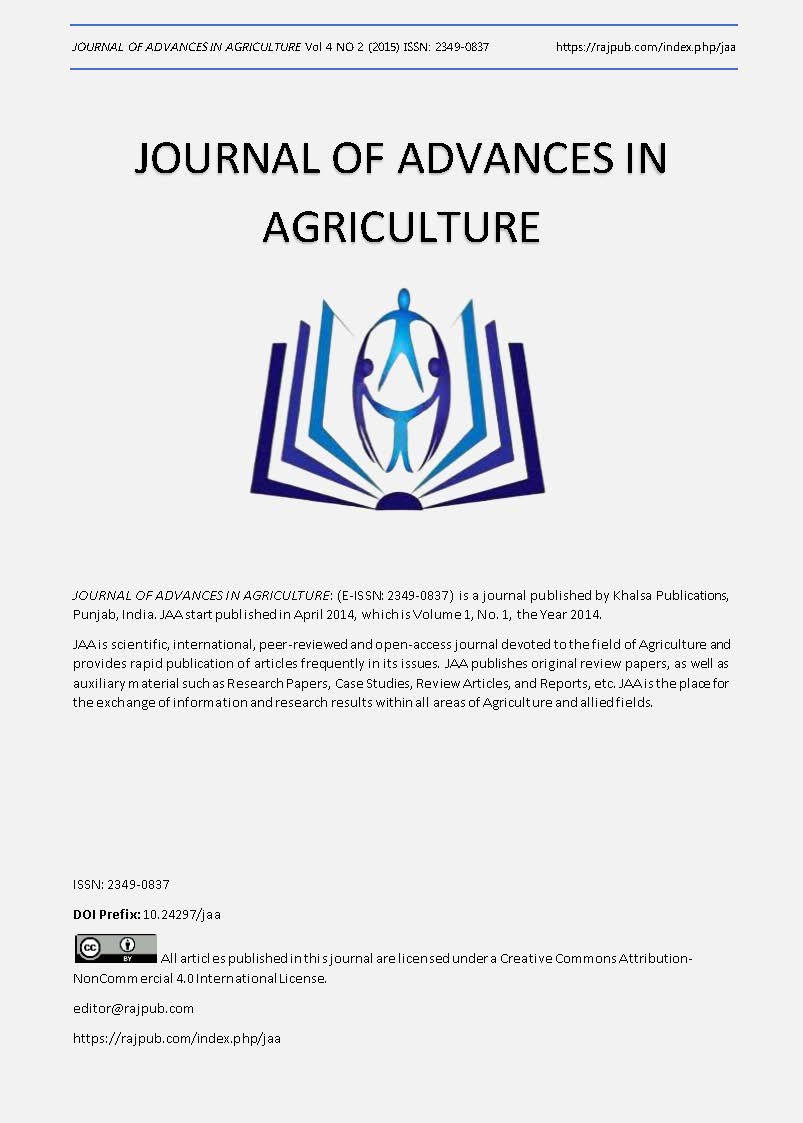ACCEPTABILITY AND UTILIZATION OF GRADED LEVELS OF GMELINA ARBOREA AND CASSAVA PEELS CONCENTRATES IN WEST AFRICAN DWARF SHEEP
DOI:
https://doi.org/10.24297/jaa.v4i2.4272Keywords:
Cassava peels, Gmelina arborea, Intake, Nutrient digestibility, Nitrogen utilization.Abstract
The nutritive value ,voluntary dry matter intake, and the nutrient digestibility of graded levels of Gmelina arborea and cassava peels concentrates in WAD sheep was investigated. Twelve WAD sheep aged 1-2 years old and weighting 14.00± 0.45 kg were used in a complete randomized design. Diets were formulated such that cassava peels was replaced with Gmelina arborea leaf meal at 0, 33.33, 66.67, 100% levels, designated as diets A, B, C, and D respectively. Diet without Gmelina arborea leaf meal was tagged the control diet. The concentrate feed was compounded to contain 16% CP. Diets with 33.33% inclusion level of Gmelina arborea had significantly (P<0.05) higher dry matter intake (DMI) 598.80g day-1, while the lowest DMI 425.00g day-1 was obtained in animals fed 100% inclusion level of Gmelina arborea. Crude protein intake (CPI) of animals fed diets with 33.33% inclusion levels of Gmelina arborea were significantly (P<0.05) highest, followed by 66.67% inclusion level and the least was observed in 0% inclusion level of Gmelina arborea. Dry matter digestibility (DMD) was significantly (P<0.05) different across the dietary treatments, animals placed on diets with 33.33% inclusion level had the highest DMD, followed by animals on diets with 66.67, 100 and 0% inclusion levels. CP digestibility (P<0.05) increased from 33.33% to 100% inclusion levels of Gmelina arborea leaf meal, the lowest CP digestibility was observed at 0% inclusion level. CF digestibility (P<0.05) increased from 33.33% to 100% inclusion levels of Gmelina arborea leaf meal, while the lowest CF digestibility was observed at 0% inclusion level. N intake increased significantly (P<0.05) with increase in the level of Gmelina arborea inclusion from 33.33% to 100%. N retention was significantly (P<0.05) different, diets with 33.33% Gmelina arborea inclusion had the highest value (64.36g day-1) followed by 66.67%, 100% and the least (52.64g day-1) was at 0% inclusion level of Gmelina arborea. N balance values also followed the same trend. From the results of this study, it can be concluded that the inclusion of Gmelina arborea leaf meal in WAD rams diet was well tolerated without adverse effect on acceptability, intake and nutrient digestibility, and inclusion level of 33.33% is hereby recommended in ruminants diet for optimum performance and productivity.
Downloads
Downloads
Published
How to Cite
Issue
Section
License
 All articles published in Journal of Advances in Linguistics are licensed under a Creative Commons Attribution 4.0 International License.
All articles published in Journal of Advances in Linguistics are licensed under a Creative Commons Attribution 4.0 International License.




